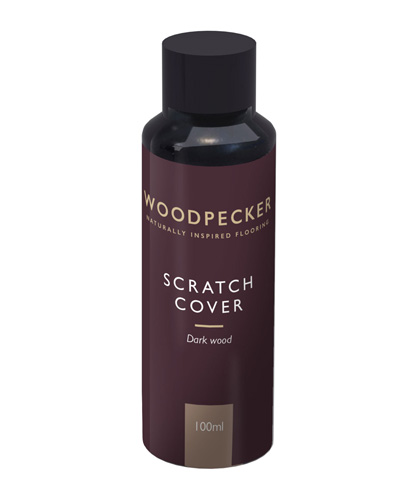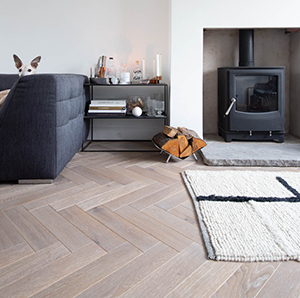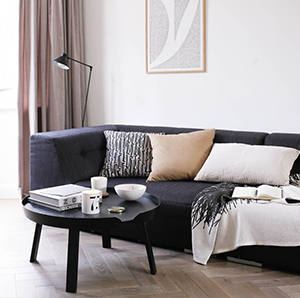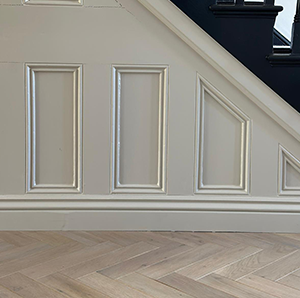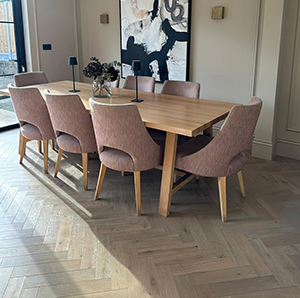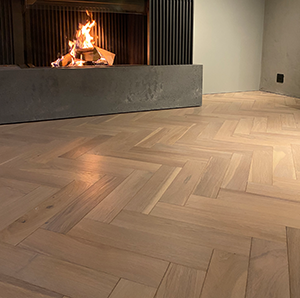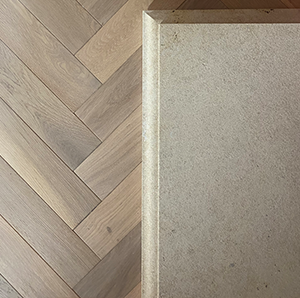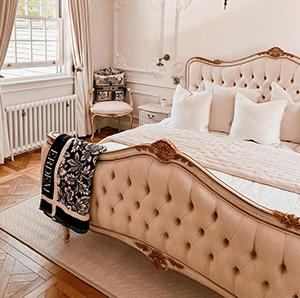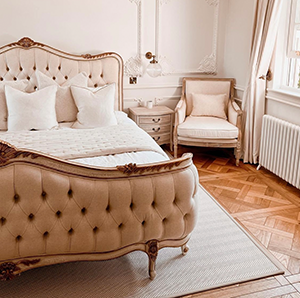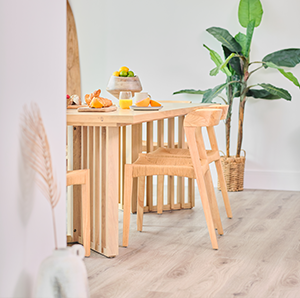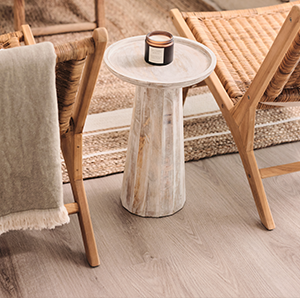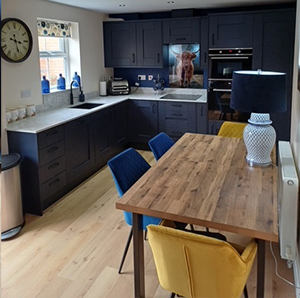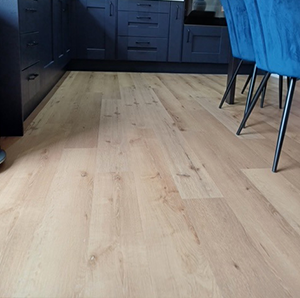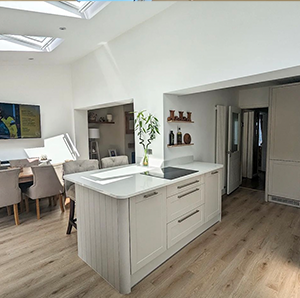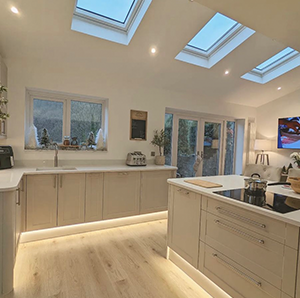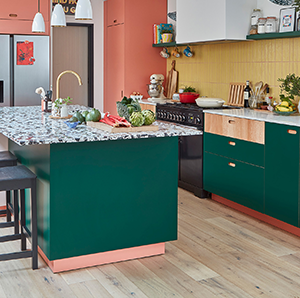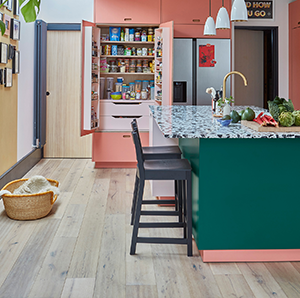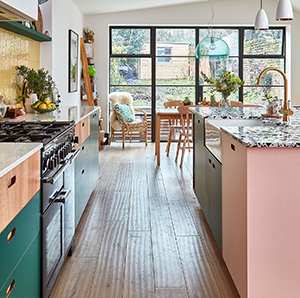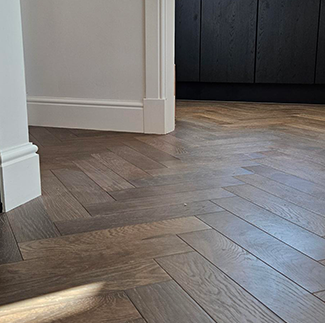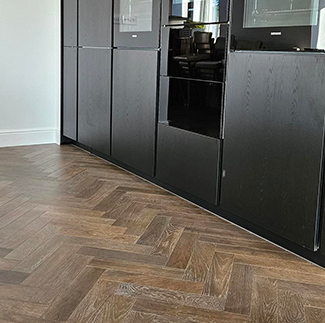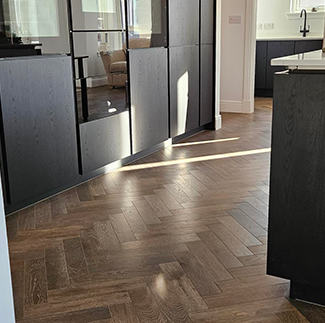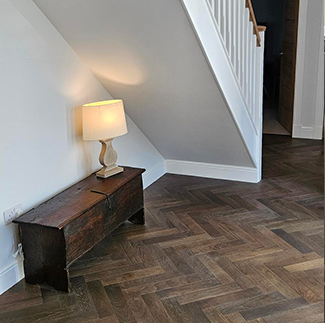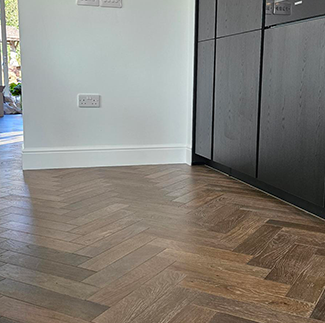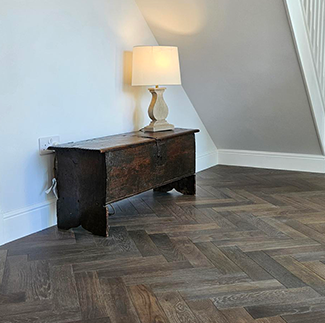Even though the most advanced wood treatments and finishes are used to create our floors, they will need to be looked after to stay in tip-top condition. This involves cleaning and sometimes re-finishing your flooring at suitable intervals to ensure it continues to delight throughout its lifetime.
Day to Day Cleaning

CLEANING OILED FLOORS
For general cleaning, simply use our Cleaning Liquid for Oiled Floors to keep your floor in great condition. Alternatively, you can use a well-wrung mop. However, only use water if you are doing that.
For a deeper clean now and again, use Woodpecker One Coat Soap. This clever product will clean your floor and form a protective film, helping to build its surface resistance over time and making your oiled floor easier to maintain.
Restoration Treatments for Wood Flooring
For Both Oiled & Lacquered Floors
How often you recoat or repair your floor will depend on several factors including the type of floor it is, its finish and the wear it’s experienced. As a basic preventative measure, you might consider recoating your floor every two or three years. Don’t wait until your floor looks worn. If you allow the protective coat to wear away, it becomes susceptible to dirt and water penetration and harder to clean and repair.
A Quick Floor Test
A good way to check whether your floor needs treatment is to pour a few drops of water onto its surface. If the finish is in good order, the water will bead on the floor and can easily be wiped way. No maintenance is needed. If the water slowly soaks into the timber, leaving behind a light saturation mark, the finish is starting to wear thin. A new coat of lacquer or oil should be applied. However, if the water is immediately absorbed and leaves a dark stain, the finish has been completely worn away and the floor may need sanding and recoating.
Please note, before any treatment is carried out, we recommend testing in an inconspicuous area of the floor to check compatibility.
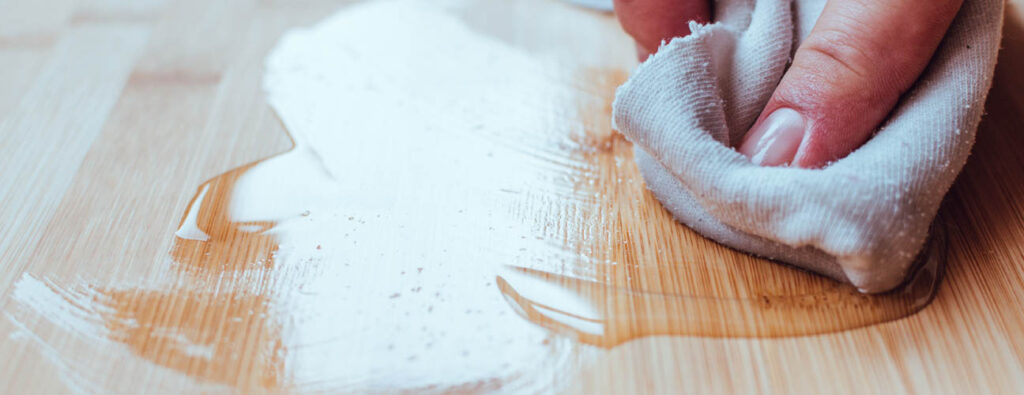
Re-Coating & Repairing Woodpecker Flooring
Oiled Floors
Isolated areas of an oiled floor can be treated without having to re-oil the entire floor. Oiled surfaces aren’t as tough as lacquered surfaces and need to be maintained more often, by applying Woodpecker One Coat Oil.
Brecon Floors
The best way to conceal small scratches and marks on our Brecon range is with Scratchfix – a quick and easy method to restore scratches on resilient floors.
Lacquered Floors
If your lacquered floor gets any isolated scratches or dents, these can be sealed using Woodpecker Scratch Cover according to the instructions supplied.
Deeper scratches or gouges might call for professional wood filler, available in a variety of colours from most hardware and flooring retailers. Afterwards, apply some Woodpecker Scratch Cover to give the repair a protective finish.
Extra care is needed when sanding stained floors to ensure that the process doesn’t break through the complete layer of stain. In this instance, the floor would require a patch-repair before the lacquer is applied.
If the floor is badly worn in some places, it may be necessary to sand the flooring back to its unfinished surface before recoating all over. Unlike oil, lacquer doesn’t penetrate the wood’s surface, instead it sticks to it so the entire floor must be covered to avoid ridges and overlap marks. A single coat of lacquer will be enough to protect against moisture, though several coats should be applied if the floor faces lots of foot traffic.
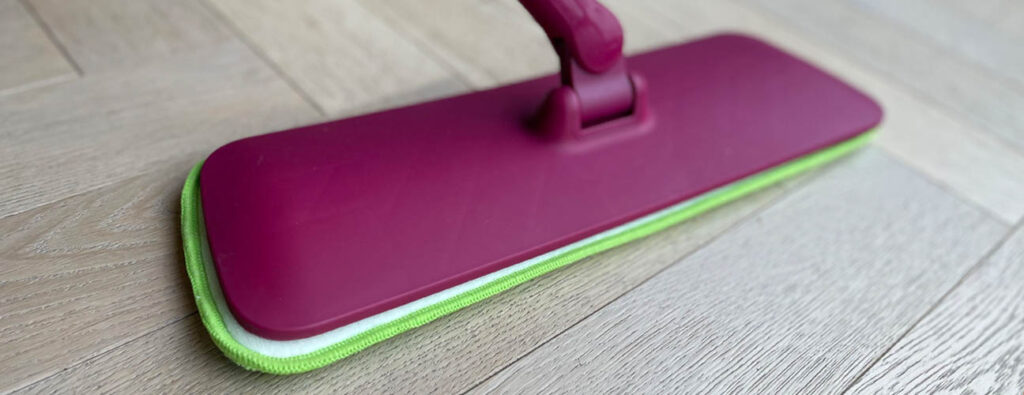
Cleaning & Care Products
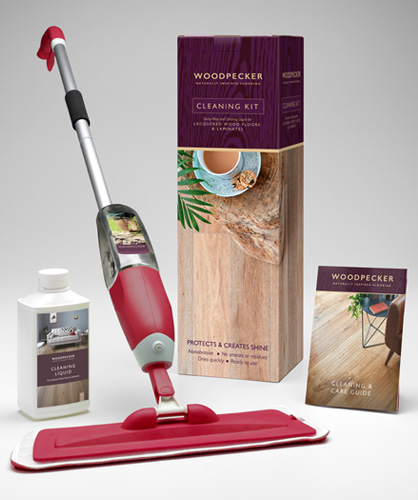
Cleaning Products
Cleaning Products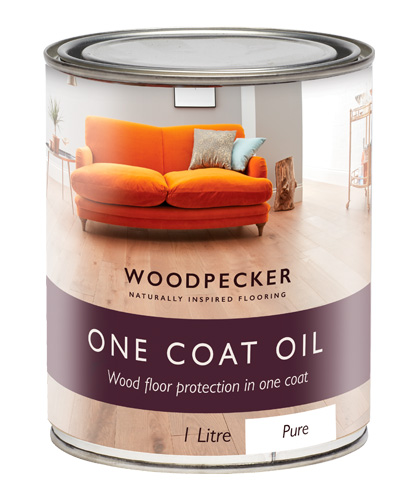
Maintenance Products
Maintenance Products